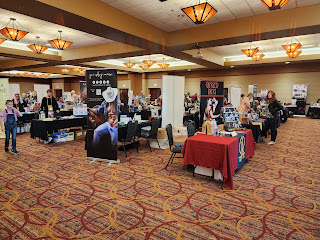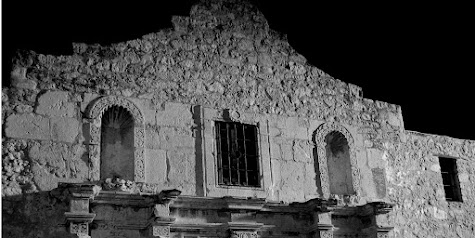During a recent trip
to my local post office, my attention was immediately drawn to a current stamp
offering featuring Chief Standing Bear.
I recalled learning a bit about him
when preparing a post for a different blog about the Dhegihan Siouan Language
Roots, shared by the Osage, Quapaw, and Omaha tribes. The Ponca people,
originally part of the Omaha tribe, broke away and established their territory
along the Niobrara River. To learn more
about these tribes, please CLICK HERE
 |
Chief Standing Bear
|
Chief Standing
Bear (Ma-chú-nu-zhe) was the leader of a band of about 82 Ponca people who
lived near the banks of the Niobrara River. Once the Kansas-Nebraska Act of
1854 was passed, farmers in the East expected to obtain the cheap land that the
government was planning to put on offer. The indigenous tribes, including the
Ponca, were being urged to sell out and remove themselves to "Indian
Territory," in what is today Oklahoma.
A bit of history:
By 1789, when
Juan Baptiste Munier acquired trading rights with the Ponca, they had villages
along the Niobrara River near its mouth, and ranged as far east as present-day
Ponca, Nebraska, at the mouth of Aowa Creek. A smallpox epidemic had reduced
their numbers from approximately 800 to 100 at the time of the Lewis and Clark
Expedition in 1807.
When Standing
Bear was born about 1829, the Ponca traditionally raised maize, vegetables, and
fruit trees in these sites during the summer. They ranged westward for the
winter bison hunt. The hunts brought them into frequent contact with their
traditional enemies, the Brulé and Oglala Lakota. Sometimes the Ponca allied
with their enemies to raid Pawnee and Omaha villages, but they also suffered
raids by them.
In Standing
Bear's childhood, Brulé raids forced the Ponca to rely more on agriculture and
less on the winter bison hunt. In his adolescence, the tribe split into two
villages: Húbtha? (Fish Smell) near the mouth of Ponca Creek; and Wái?-Xúde
(Grey Blanket) on the northwest bank of the Niobrara. Standing Bear learned the
ways of the men, how to hunt and fish, and prepared to take his place in the
tribe.
In 1859, when
Standing Bear was a young man, the Kansas-Nebraska Act of 1854 had encouraged a
flood of European-American settlers, and the United States government pressured
the Nebraska tribes to sell their land. At the same time, they were suffering
raids from the North by the Brulé and Oglala. Because tribal land claims
overlapped, the Omaha treaty of 1854 included a cession of a 70-mile-mile-wide
strip of land between Aowa Creek and the Niobrara, which was also claimed by
the Ponca.
By 1862, white
settlers were quickly moving in and building the town of Niobrara where the
Ponca summer corn fields had been. The Brulé raids from the north cut off the
winter hunting grounds and forced the Ponca to abandon Húbtha. In 1858, under
this pressure, the Ponca ceded much of their lands to the United States. They
reserved the land between Ponca Creek and the Niobrara, approximately between
present-day Butte and Lynch, Nebraska.
 |
Ponca near Ponca City, Okla
|
The land to
which the Ponca moved proved unsuitable, leading to continual famine. The tribe
was still subject to raids by hostile tribes. The Ponca spent years attempting
to hunt and raise crops and horses near their old village of Húbtha? and the
town of Niobrara. The government failed to provide the mills, personnel,
schools, and protection that it had promised by the 1858 treaty. It did not keep
up with the increasing Ponca tribal enrollment in distribution of annuities and
goods. Relatives sought annuity payments, people lost resources to sickness and
starvation, and raids from hostile tribes were frequent.
In 1865 a new
treaty allowed the Ponca to return to their traditional farming and burial
grounds, in the much more fertile and secure area between the Niobrara and
Ponca Creek east of the 1858 lands and up to the Missouri River. Unfortunately,
as part of the 1858 Treaty of Fort Laramie, the government illegally gave the
new Ponca reservation to the Santee Dakota as part of its negotiation to end
Red Cloud's War. The government soon began to seek to remove the Ponca to
Indian Territory.
The Ponca did
not want to sell out. They did not like “the hot country” lands
assigned to them in Indian Territory, and decided to return to their
traditional homelands. The
U.S. government decided differently. When the eight Ponca chiefs reached their
homeland, the government representatives issues and official order on 12 April
1877 to force their removal. Federal troops were called in to enforce the
removal orders, and by May 1877, the Ponca had begun their forced migration to
"the hot country."
 |
Ponca Trail of Tears
|
Between May 16
and July 9, 1877, is what became known as the Ponca Trail of Tears. The above
map follows the trail taken by Chief Standing Bear when he led his tribe back
to the new territory assigned for the Poncas. It is a visual representation of
the long trail the Poncas had to travel by foot. Along the hundreds of miles, tribal
members suffered various difficulties, including inclement weather. They lost
over one hundred members of the tribe, including Standing Bear’s son, Bear
Shield.
Bear Shield’s
dying wish was to be buried among his ancestors back along the Niobrara River. After
arriving to their allotment in Indian Territory, along with a small contingent,
Standing Bear decided to return back to their homeland in order to bury his
son. Upon arriving at the Omaha reservation—that tribe being allowed to retain
most of their traditional territory—Standing Bear was arrested and judged. That
began one of the most important cases for the legal status of Native American
people. It set an example for the widespread application of Human Rights all
over the country.
 |
Standing Bear, wife and son
|
Chief Standing
Bear successfully argued in the U.S. District Court in Omaha that Native Americans
are "persons within the meaning of the law" and have the right of
habeas corpus. He became the first Native American judicially granted civil
rights under American law. His first wife, Zazette Primeau (Primo), daughter of
Lone Chief (also known as Antoine Primeau), mother of Prairie Flower, who died
during the journey to Indian Territory, and Bear Shield, who died shortly after
arriving in Indian Territory, was also a signatory on the 1879 writ that
initiated the famous court case.
 |
Chief Standing Bear in National Statuary Hall of U.S. Capitol
|
In November of
2019, a statue of Chief Standing Bear was donated to the National Statuary Hall
of the United States Capitol by the State of Nebraska. This was to commemorate
the civil rights case Standing Bear v. Crook that recognized Native Americans as "persons within
the meaning of the law" who have the right of habeas corpus.
There is also a
Chief Standing Bear Memorial Bridge crossing the Niobrara River.
If you wish to
learn more about legalities of this civil rights case, please CLICK HERE
I became
interested in the tribes who settled along the Missouri River while writing my
Old Timey Holiday Kitchen book, Bee Sting Cake by Brunhilde. Since “oma” is the German word for
grandmother, and she would soon be traveling to the town of Omaha, she wanted
to know who Ha was. I am happy to announce that, as of this month, this book is
available in paperback as well as an ebook. For details, please CLICK HERE
Elise is my other book about a new immigrant
from Germany. She also would travel past this region, but would do so by
steamboat instead of train. This book is also now available in paperback as
well as an ebook. For details, please CLICK
HERE
Sources:
https://www.ketv.com/article/nebraska-honors-chief-standing-bear-statue-us-capitol/29120336
https://en.wikipedia.org/wiki/Standing_Bear
https://blogs.loc.gov/law/2019/11/chief-standing-bear-and-his-landmark-civil-rights-case/
https://commons.wikimedia.org/w/index.php?search=Chief+Standing+Bear&title=Special:MediaSearch&go=Go&type=image

























